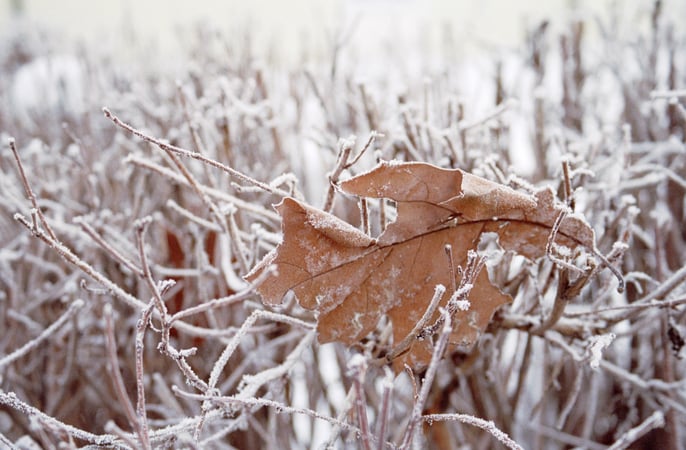
Changing seasons can be especially problematical for migraine sufferers. While many of us are sorry to see the end of summer and are not looking forward to shorter days and cooler temperatures, there are compensations. There is Christmas for instance, or winters sports, fall colors, and maybe even a touch of snow.
Migraine sufferers often take a very different view, dreading the approach of winter with a feeling of impending doom. The changing seasons often bring increased migraine frequency, and a feeling of helplessness because it seems the situation is beyond control.
Some things can help, though, making it possible to face winter’s arrival with hope and a more positive outlook.
What Causes Winter Migraines?
No one knows for sure, but there’s plenty of research study and anecdotal evidence to point to several culprits:
- A change in air quality: From changes in barometric pressure to mold spores from fallen leaves, the air around us holds all kinds of hidden triggers for migraine sufferers.
- A change in sleeping patterns: Migraineurs do best when they keep their body rhythms constant, and that includes sleeping patterns. As we adjust the clocks seasonally there’s a natural disruption to sleep, and this can be enough to trigger an attack.
- A change in diet: The winter months bring all kinds of dietary temptations. There’s more partying for one thing, with more alcohol and more late nights. There is also a greater temptation to ditch healthy eating in favor of fast, comfort foods that may also be higher in migraine-triggering substances.
Minimizing Winter Migraine Risks
While you may not escape completely unscathed, there are some things that can help keep winter migraines at bay:
Wrap Up Warm: If it’s cold out, make sure you’re dressed accordingly. Even if you’re just hopping to the car, sudden drops in temperature make us tense up, with blood vessels naturally contracting to conserve body heat. Hats, gloves, scarves and winter coats can be great fashion accessories as well as keeping heat where it belongs, inside the body. Most body heat is lost through extremities (hands, feet and head) so those winter boots are not so much an expense as an investment in your winter health.
Watch your diet: Studies have shown that up to 42% of migraine sufferers could have a vitamin D deficiency. Our tendency to stay indoors more, coupled with less natural sunlight through the winter months, can make it more difficult to get as much vitamin D as we need. Making up for it in diet is the answer, so include more foods such as fish, eggs or fortified dairy produce. If that’s too hard, maybe a food supplement would help.
Another dietary element to watch out for and avoid is monosodium glutamate (MSG), a flavor enhancer that’s used in many processed or pre-prepare foods. Soup, for instance, is a quick and hearty winter warmer, but may be inadvertently triggering migraine. Check the labels on canned or packaged foods for MSG content, or look for foods that are labeled as MSG free.
Humidify your home: Changes in humidity levels can play havoc with migraine. Investing in a home humidifier can combat the drying effects of home heating systems. If you don’t know that humidity changes (both inside and outdoors) affect your migraine pattern, try keeping a migraine diary to spot any correlation between humidity levels and migraine episodes.
Avoid too much or too little sleep: When it’s dark and cold, beds are extra comfy and the temptation to lie in is strong. As far as possible, maintain a regular sleep schedule so you don’t upset your natural rhythms.
Keep colds and flu at bay: One simple way of minimizing the chances of coming down with a cold is frequent hand washing. We touch germ-covered surfaces all the time, and then invite viruses into our bodies when we touch our faces. Keeping hands clean through washing is a simple way to cut down on the risk. Carry a hand sanitizer for those times when soap and water aren’t available.
Keep up with exercise schedules: All physical activity counts, so it’s just as good to walk briskly around the mall as it is to walk briskly along the street. While you shouldn’t exercise during a migraine, getting a regular dose of aerobic activity three times a week, for around 40 minutes, can reduce migraine attacks by 25%, according to one study. Exercise also releases our ‘feel good’ chemicals, so it helps fight depression and ward off stress, two more migraine triggers.
There’s so much to look forward to through the winter months. Anything that helps you stay pain-free and active is worth a shot.

